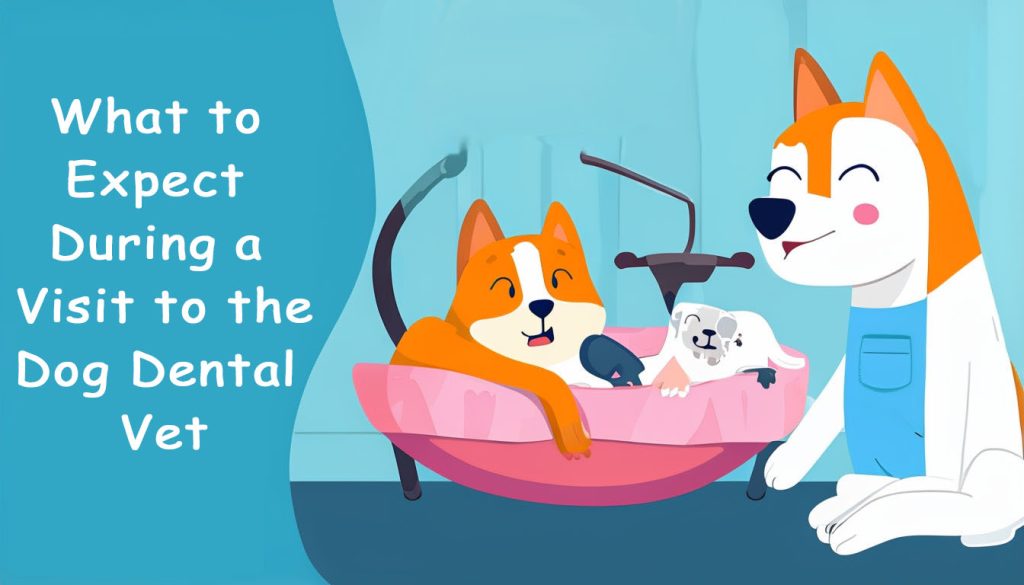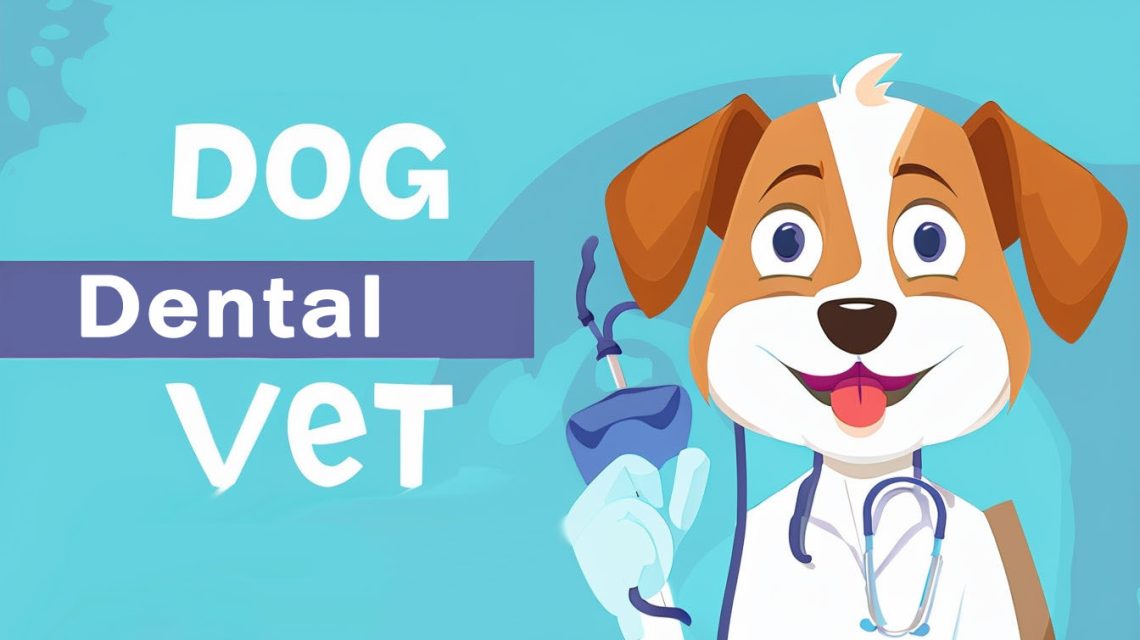Dog Dental Vet : Essential Care for Your Pet’s Oral Health
Keeping your dog’s teeth and gums healthy is a crucial part of their overall well-being. Unfortunately, many dog owners overlook the importance of proper oral care. Just like humans, dogs can suffer from dental issues such as plaque, tartar buildup, gum disease, and even tooth loss. Regular checkups with a dog dental vet ensure your pet’s oral health is in top shape and can prevent more serious health problems down the road.
In this article, we’ll explain why dental care for dogs is so important, what you can expect from a dog dental vet visit, and how to keep your dog’s teeth clean at home. With the right care, your dog can enjoy a healthy mouth and a happy, pain-free life.
Why Dog Dental Care Is So Important
Oral health plays a major role in your dog’s overall health. Ignoring your dog’s dental needs can lead to painful conditions and more serious issues like infections, which can affect other parts of their body, including the heart, kidneys, and liver. Regular cleanings and checkups with a dog dental vet help prevent these problems and ensure your dog stays healthy.
1. Preventing Gum Disease
One of the most common issues in dogs is periodontal disease, which affects up to 80% of dogs by the age of three. It starts with plaque buildup on the teeth, which can harden into tartar if not removed. Over time, this leads to gum inflammation (gingivitis) and, if untreated, can cause tooth loss and infections.
Regular visits to the vet help remove plaque and tartar, keeping your dog’s gums healthy and preventing more serious issues from developing.
2. Avoiding Pain and Tooth Loss
Dental problems can cause significant pain for dogs, even if they don’t always show it. Dogs are experts at hiding discomfort, so you may not realize your pet is suffering until the problem becomes severe. Regular cleanings at a dog dental vet can help detect and treat issues like broken teeth, infections, and abscesses before they cause serious pain or tooth loss.
3. Preventing Infections That Can Spread
Poor oral health doesn’t just affect your dog’s mouth. Bacteria from gum disease can enter the bloodstream and spread to other organs, leading to conditions like heart disease, liver infections, and kidney problems. Regular dental checkups and cleanings help prevent these dangerous complications, keeping your dog healthy for years to come.
Signs Your Dog Needs to Visit a Dog Dental Vet
Recognizing the signs of dental problems early can help you take action before the issue becomes serious. Here are some key indicators that your dog may need to visit a dog dental vet:
1. Bad Breath (Halitosis)
While it’s normal for dogs to have a bit of “doggy breath,” persistent bad breath is often a sign of dental disease. Bad breath can indicate bacteria buildup, infection, or decay, and it’s one of the most noticeable signs that your dog’s teeth and gums need attention.
2. Difficulty Eating or Chewing
If your dog suddenly seems reluctant to eat dry food, chew toys, or bones, this could be a sign of tooth pain or oral discomfort. Dogs may also drop food while eating, chew on one side of their mouth, or refuse treats that they used to love.
3. Red or Swollen Gums
Healthy gums should be pink, not red, and they should not be swollen or bleed easily. If you notice redness, swelling, or bleeding when your dog eats or chews, it’s time to schedule a visit to the vet.
4. Visible Tartar or Plaque Buildup
If you can see yellow or brown tartar on your dog’s teeth, it’s a sign that their dental care routine isn’t enough to keep plaque at bay. Regular cleanings by a vet are needed to remove tartar and prevent it from causing further damage.
5. Drooling or Pawing at the Mouth
Excessive drooling, pawing at the mouth, or showing signs of pain when touched around the jaw or mouth can indicate a more serious dental issue, such as an abscess, infection, or broken tooth. These symptoms should be addressed by a vet as soon as possible.

What to Expect During a Visit to the Dog Dental Vet
When you bring your dog to the dog dental vet, the vet will perform a thorough examination of your dog’s mouth, teeth, and gums. Here’s what you can expect during a typical visit:
1. Oral Examination
The vet will begin by examining your dog’s mouth, checking for signs of plaque, tartar, gum disease, or any abnormalities such as lumps or lesions. They’ll also assess the condition of your dog’s teeth, looking for cracks, breaks, or signs of decay.
2. Professional Cleaning
If necessary, your dog may receive a professional dental cleaning. This involves removing plaque and tartar both above and below the gum line, which can’t be done effectively with regular brushing at home. Vets typically perform cleanings under anesthesia to ensure your dog remains comfortable and still during the procedure.
3. X-Rays and Advanced Diagnostics
In some cases, the vet may recommend dental X-rays to assess the health of your dog’s teeth below the gum line. This helps identify hidden issues like abscesses, infections, or bone loss that can’t be seen with a visual examination alone.
4. Treatment of Dental Issues
If the vet finds any dental issues, such as infections, broken teeth, or severe gum disease, they may recommend additional treatments. These can range from medication and dental extractions to more advanced procedures, depending on the severity of the problem.
Maintaining Your Dog’s Oral Health at Home
While regular vet visits are essential, you also play a key role in keeping your dog’s teeth healthy between cleanings. Here are some tips for maintaining your dog’s oral health at home:
1. Brush Your Dog’s Teeth Regularly
Daily brushing is the best way to prevent plaque buildup and gum disease. Use a dog-specific toothbrush and toothpaste (never use human toothpaste, as it can be harmful to dogs). Start by getting your dog used to the brushing process gradually, rewarding them with praise or treats after each session.
2. Provide Dental Chews and Toys
Dental chews and toys can help reduce plaque and tartar by encouraging your dog to chew. These products are designed to scrape away buildup on your dog’s teeth as they gnaw, making them a fun and effective way to support oral health.
3. Feed a Balanced Diet
Diet also plays a role in oral health. Feeding your dog a high-quality, balanced diet can help keep their teeth strong and reduce the risk of dental issues. Some dog foods are specifically formulated to promote dental health by reducing plaque and tartar.
4. Schedule Regular Vet Visits
Even with the best at-home care, it’s essential to schedule regular visits to the vet for dental checkups. Professional cleanings and exams help catch potential problems early and keep your dog’s teeth and gums in optimal condition.
FAQs About Dog Dental Care
How often should I take my dog to the dental vet?
- Most dogs benefit from an annual dental checkup, but some may require more frequent visits depending on their breed, age, and dental health. Your vet can recommend the right schedule for your dog.
Is anesthesia necessary for dog dental cleanings?
- Yes, most dental cleanings are done under anesthesia to ensure your dog remains still and comfortable during the procedure. Anesthesia allows the vet to thoroughly clean below the gum line, which can’t be done effectively without it.
What are the signs of dental disease in dogs?
- Common signs include bad breath, red or swollen gums, difficulty eating, excessive drooling, and visible tartar buildup. If you notice any of these symptoms, it’s time to visit the vet.
Can I use human toothpaste to brush my dog’s teeth?
- No, human toothpaste contains ingredients that can be harmful to dogs. Always use a toothpaste designed specifically for pets.
What’s the best way to prevent dental disease in dogs?
- The best way to prevent dental disease is by brushing your dog’s teeth regularly, providing dental chews or toys, and scheduling annual dental checkups with your vet.


